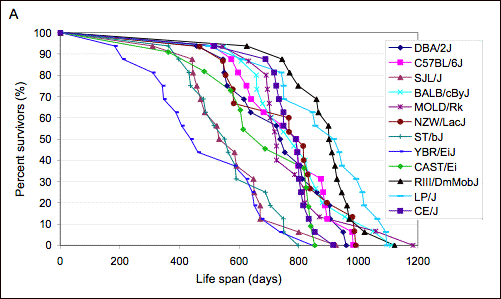The Hidden Truth of Anti-Aging Research and Longevity Claims
Written on
Chapter 1: Understanding Anti-Aging Research
The exploration of aging mechanisms is often a costly venture, contingent on various factors. Generally, studies focusing on aging and longevity require significant investment, particularly when considering human trials with long durations—often exceeding 50 years. This presents a challenge, as ethical considerations limit the feasibility of such extensive studies on humans.
Consequently, many longevity claims circulating in mainstream media are primarily derived from animal research, particularly from species like roundworms (C. elegans), fruit flies, and mice. These studies allow researchers to draw inferences about potential human applications based on observational data or interventions measuring specific biomarkers. However, relying on the eventual outcomes of human lives to validate these claims is impractical and ethically unfeasible. Instead, we must rely on a synthesis of data sources to identify what might genuinely promote longevity in humans. Generally, the consensus remains: engage in physical activity, consume nutritious foods, prioritize sleep, and cultivate social connections.
The majority of sensational claims in the media—such as a particular drug adding years to your life or methods to reverse aging—stem from animal research. However, these animal studies harbor an overlooked issue.
Section 1.1: The Underlying Problem
A recent preprint straightforwardly addresses a critical flaw within geroscience research: the reliance on short-lived and metabolically compromised control animals can obscure the interpretation of lifespan studies. Furthermore, studies involving mice frequently involve small sample sizes, focus on one gender, and may overlook relevant confounding factors.
It's worth noting that laboratory animals often exhibit less genetic diversity compared to their wild counterparts and are kept under highly artificial conditions. Driven by the constraints of time, funding, staffing, and the pervasive "publish or perish" mentality, researchers frequently opt for short-lived mouse strains in aging studies. Unfortunately, these strains tend to show a heightened response to longevity-promoting interventions, leading to inflated results.
Fortunately, awareness of these issues is growing, and initiatives like the National Institute on Aging's Interventions Testing Program (ITP) are addressing these challenges by utilizing both sexes, larger sample sizes, and genetically diverse mice.

Section 1.2: Implications of Research Findings
Understanding the ramifications of these findings is crucial. Some compounds investigated by the ITP have failed to reproduce previous lifespan extension claims. Many popular anti-aging interventions do not yield significant results when tested on longer-lived strains of mice. The authors of the preprint propose the "900-day rule," suggesting that without independent replication, a potential longevity intervention in mice should only be regarded with confidence if the lifespan of control mice is close to 900 days or if the treated group's lifespan significantly exceeds this figure.
Considering this rule, numerous widely publicized longevity strategies appear less effective, particularly when they cannot be replicated in mouse strains with typical lifespans. Two notable examples are metformin and calorie restriction, which may promote longevity in short-lived mouse strains but show inconsistent results in those with standard lifespans.
For instance, metformin studies in normal-lifespan mice have shown results ranging from slight lifespan extensions to no effect at all. While metformin has proven advantages for specific conditions like diabetes, its direct impact on lifespan extension is likely minimal. Similarly, calorie restriction has shown a negative correlation in lifespan extension among female and male mice, suggesting that short-lived strains benefit while those with normal lifespans do not.
Subsection 1.2.1: Reevaluating Longevity Interventions
This leads to an important insight: many purported longevity-enhancing interventions may merely normalize lifespan rather than extend it. By breeding short-lived mouse strains, researchers create a "lifespan deficit," and some interventions only serve to minimize this deficit rather than add to the inherent lifespan.
To illustrate, metformin may aid lifespan extension in individuals with diabetes due to its impact on the lifespan deficit caused by the condition. However, for those without diabetes, metformin's effects on lifespan are negligible. The same logic applies to calorie restriction; it may prolong life for those with excess body fat but has limited effects on those with a healthy body composition.
Chapter 2: Positive Developments in Longevity Research
Despite these challenges, there are promising developments for those interested in longevity. Certain interventions, beyond the fundamental lifestyle recommendations mentioned earlier, have demonstrated robustness across various mouse strains while adhering to the 900-day rule. This does not imply any guarantees for human longevity, as the journey from animal to human trials is fraught with obstacles. Nevertheless, these interventions present better starting points than those that fail to meet the 900-day criteria.
The preprint identifies several compounds that consistently enhance lifespan across diverse mouse strains, including rapamycin and combinations of rapamycin with acarbose or metformin. Notably, beta-blockers like metoprolol and nebivolol have also shown lifespan-extending properties.
Finally, employing the 900-day rule concerning genetic findings, the authors list 24 longevity-related genes that have demonstrated lifespan extension in studies using long-lived control mice. These genes are associated with mTOR signaling, growth signaling pathways, the GH/IGF-1/insulin axis, and other critical pathways. Genes involved in DNA repair, telomere extension, and nutrient sensing also show promise, with FGF-21 overexpression yielding the most robust results.
Here's a reminder that distinguishing between effective and ineffective interventions is crucial for advancing our understanding of longevity.
Explore the skincare secrets that dermatologists utilize every night to combat aging effectively.
Dive into the conversation on the aging process and discover groundbreaking anti-aging secrets with David Sinclair.